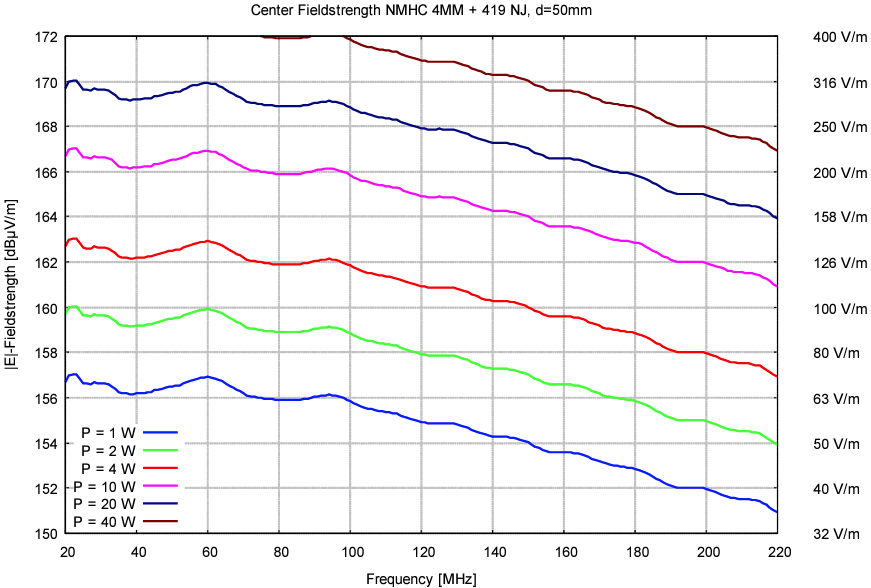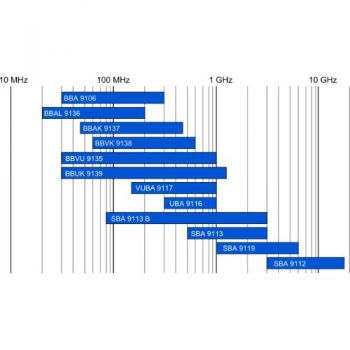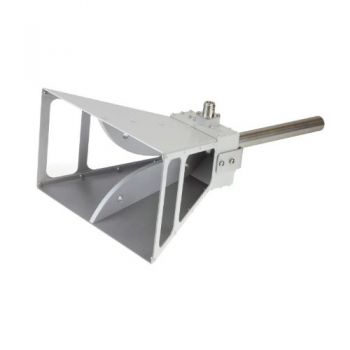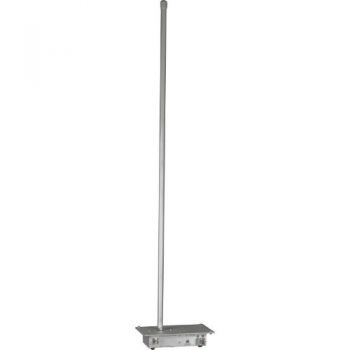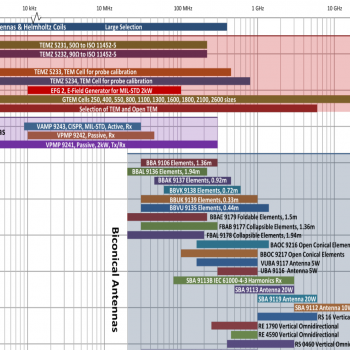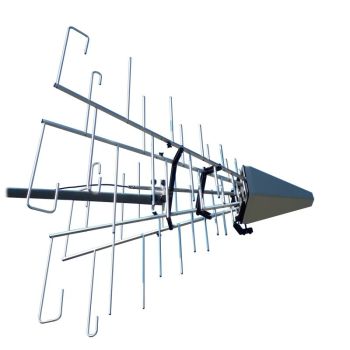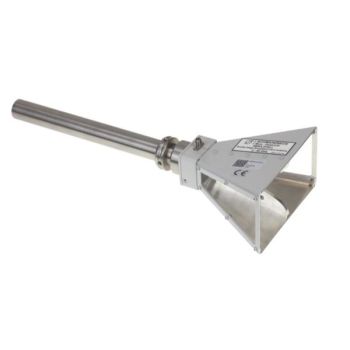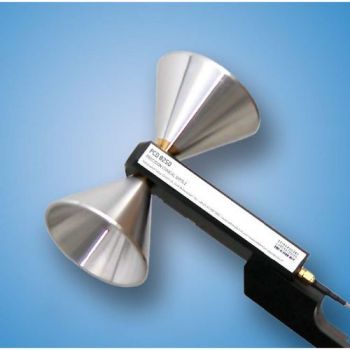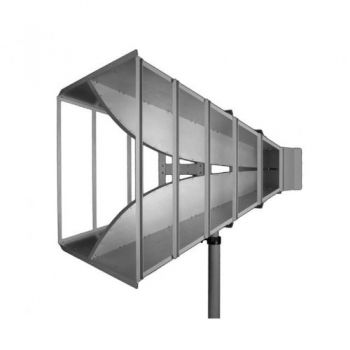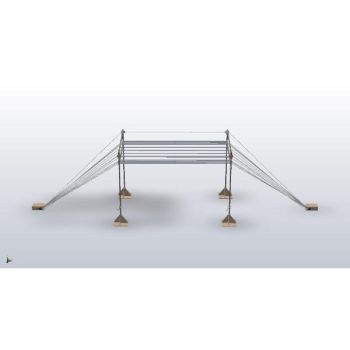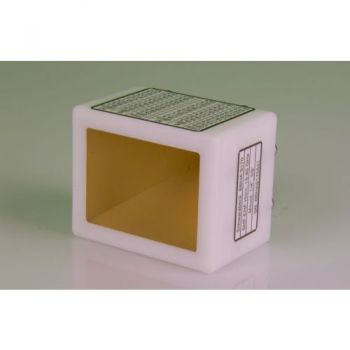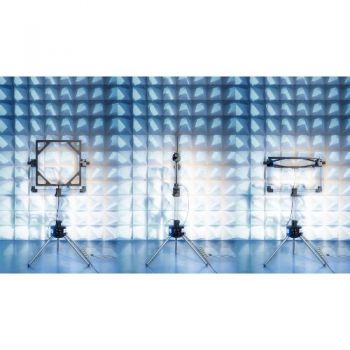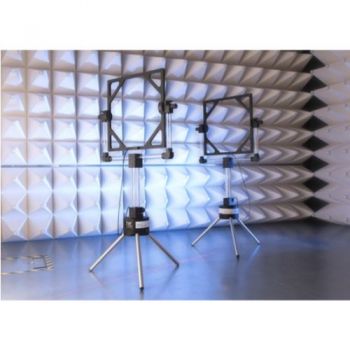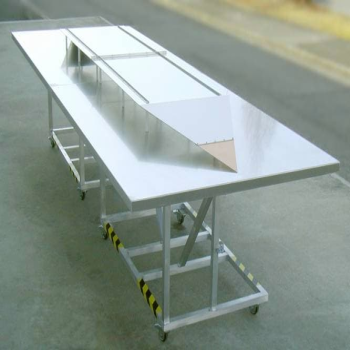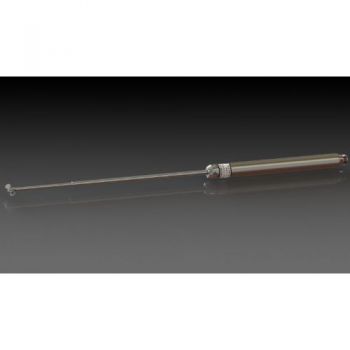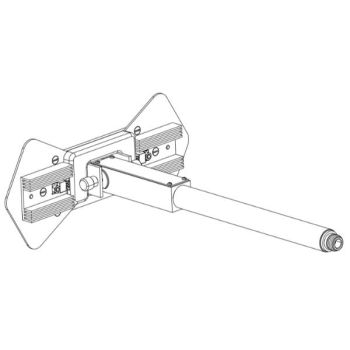
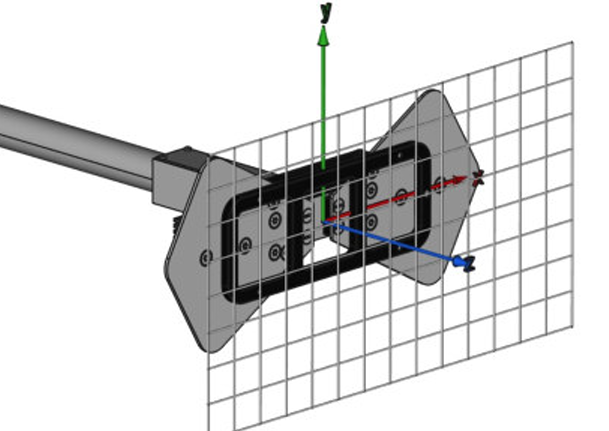


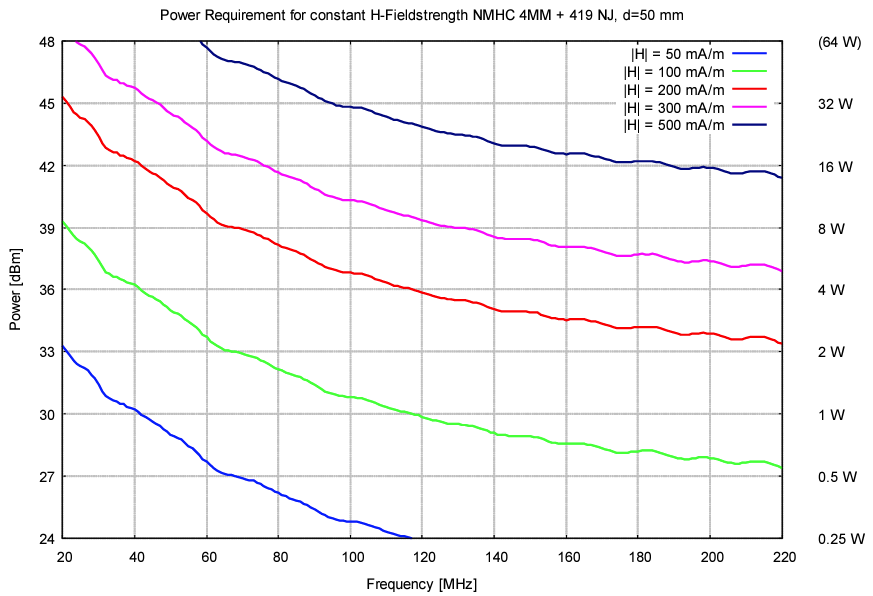
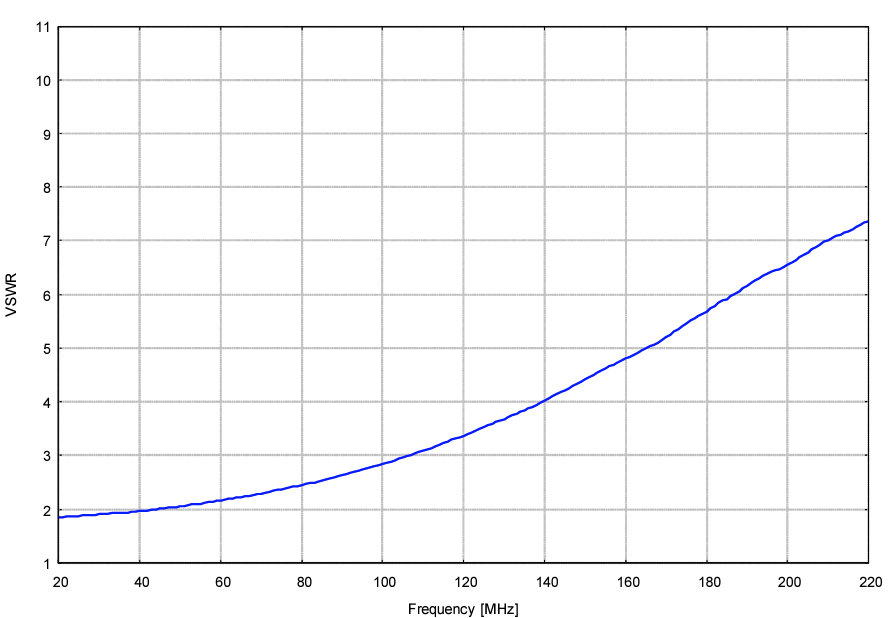
419 NJ Elements for NMHC 4MM Balun, Antenna Elements
- Small biconical microwave antenna elements
- 20 - 220 MHz
- Compliant with FMC1278 + Others
- Purchase with NMHC 4 MM
- 30 W
419 NJ Elements for NMHC 4MM Balun, Antenna ElementsFlat, broadband antenna elements with termination resistors and heatsinks for the NMHC 4MM Balun for efficient immunity testing at close distances in the frequency range below 220 MHz. The antenna is linear polarized.
The 419 NJ elements for the NMHC 4MM balun were designed because of the fact that below 360 MHz, only resonant antennas were available, with the disadvantage of detuning when approaching the EuT surface. This close proximity detuning effect had a negative impact on the reproducibility of immunity tests. The described issues are solved by the 419 NJ flat elements by the following three measures:
Because of a drastic increase of mobile phones and handheld transmitters within the last years, various disturbances generated a need for new, more efficient immunity test methods with good reproducibility. Existing radiated immunity tests with test distances typically between 1 m to 3 m require expensive power amplifiers. Several investigations in the very close surrounding of mobile phones and handheld transmitters have shown that such devices can generate very high field strengths in the order of some 100 V/m when using only a few Watt power. With existing immunity test methods, the effort to generate field-strength levels is extremely high, as described before. Thanks to the special shape of the 419 NJ elements, both can be achieved simultaneously, with an enormous bandwidth and a very close distance to the EuT surface, typically 5 mm. This is an economical way to generate very high field strengths by using moderate power of, e.g., 10 to 20 watts. The large bandwidth of the radiating elements allows fast wideband testing without any need for antenna changes, therefore even country specific frequency bands can be tested without extra effort. Application:The typical application of the NMHC 4MM with 419 NJ elements is immunity testing of components in the automotive industry, medical, scientific, or aerospace environment, where immunity against handheld transmitters is an important topic. The standard ISO 11452-9 proposes several antenna types for close proximity testing. Usually, the surface of a EuT is divided into a grid with a mesh width of, e.g., 10 cm. Each gridpoint is tested for two orthogonal polarisations with the desired field strength while observing the EuT condition. Typical antenna-to-EuT spacings are 5 mm or 50 mm, provided by the antenna elements' spacers. The 419 NJ elements are mounted with M4 knurled screws at the element fixture nuts of the balun. When mounting the flat elements care should be taken to avoid overtightening the threads. It is sufficient to tighten the element screws with moderate torque. Various experiments have shown that the contact at the feed point is always sufficient. During immunity tests with the 419 NJ elements, the surface temperature might rise depending on transmit power and time. Especially the termination resistors, heatsinks, and the radiating elements will heat up to approx. 50°C and above while powered with 30 W, this is the standard, intentional use and not a defect.
The functional check of the NMHC 4MM can be made measuring the VSWR at the N-connector of the antenna rod. The radiating antenna elements must be connected to the balun. The VSWR depends on environmental reflections, therefore a minimum spacing of 30 cm to any reflective obstacle should be maintained. The voltage standing wave ratio is defined as the sum of the forward and reflected voltage divided through the difference of forward and reflected voltage. The VSWR can also be expressed as reflection coefficient or return loss (RL, |S11|). The reflection coefficient r is the ratio of reflected and forward voltage. The following tabular provides correspondences for the most common values, missing values can be calculated by the given equations.
|







